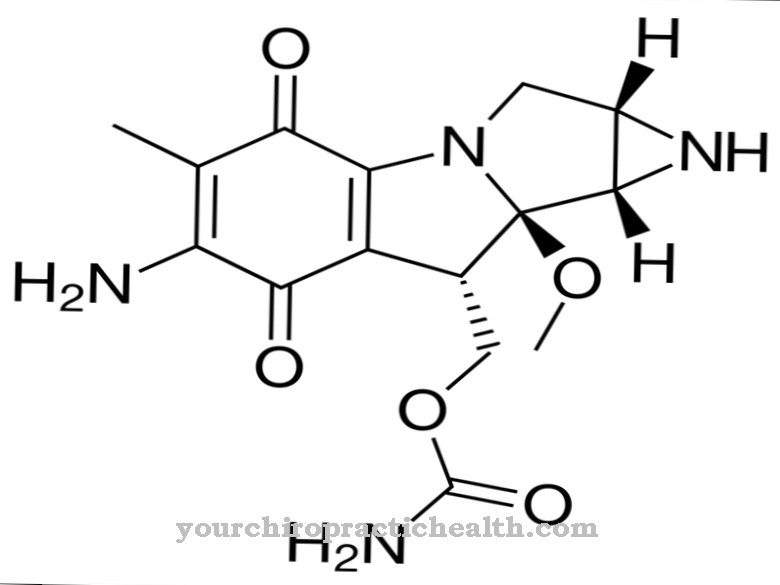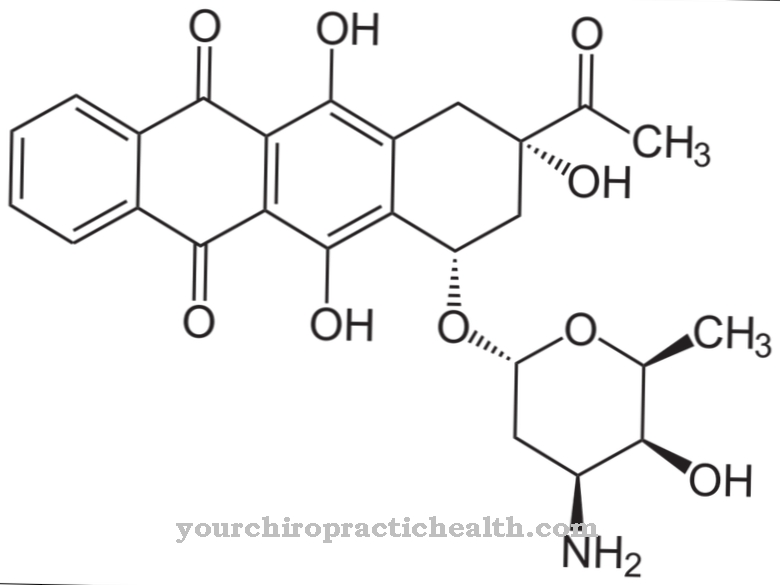Once the clinical development is complete and the preparation Arhalofenate If it has the necessary approvals, it should be used in the treatment of type 2 diabetes. Animal experiments have shown that not only the blood sugar level but also the triglyceride level in the bloodstream can be effectively reduced. However, this mechanism is still largely unexplored.
What is arhalofenate?

The drug arhalofenate is currently still in clinical development and is to be used in the future as an antidiabetic for patients suffering from type 2 diabetes. This preparation is a so-called partial agonist, which occupies a certain receptor according to the lock and key principle and partially replaces or imitates a transmitter. In contrast to agonists, partial agonists are not able to completely trigger the desired effect in a cell.
Partial agonists such as arhalofenate are developed when the maximum effect that can be achieved with an antagonist is not desired in therapy, for example for safety reasons. The US company Metabolex is responsible for the clinical development of the preparation. So far it has already been shown in animal experiments that the preparation can lower the blood sugar level and the triglyceride level in the blood.
Pharmacological effect
The active ingredient arhalofenate is a prodrug. This means that the arhalofenate itself has no pharmacological effect. This only unfolds after it has been converted into an active ingredient by the metabolism. Arholfenat achieves the desired effect via peroxisome proliferator-activated receptors, which are located directly in the cell nucleus and regulate a large number of genes here. These receptors are activated by so-called ligands, which specifically bind to a certain receptor.
In contrast to substrates, ligands cannot be converted by the respective target molecule. But they can very well change its molecular structure. Animal experiments have shown that arhalofenate can effectively lower blood sugar levels. It therefore has an indirect effect on the insulin, which is formed in the pancreas and primarily has the task of lowering the blood sugar level in the human body. It does this by stimulating the cells to take up more glucose from the blood.
Another effect that has been observed is that arhalofenate can also lower the triglyceride level in the blood. The triglyceride levels in the blood play an important role in the diagnosis of diseases. An elevated triclycerol level can indicate that a metabolic disorder or another disease, such as a kidney disease, is present. However, the mechanism by which arhalofenate lowers triglyceride levels is still unknown.
Medical application & use
Once the clinical trials are complete and arhalofenate has been approved, it will be used to treat patients with type 2 diabetes - also known as diabetes mellitus. This disease, also popularly known as diabetes, is a metabolic disease. This manifests itself among other things through the symptom that sugar is excreted in the urine. On the basis of this symptom, the English doctor Thomas Willis was able to diagnose diabetes in 1645 using taste tests of the urine.
Type 2 diabetes is a collective term for various metabolic disorders that have hyperglycemia as the main finding. In the affected patients, the regulation of the nutrient glucose is disturbed. In the early stages, patients often complain of a dry mouth and a relatively great feeling of thirst. If the disease is not treated, it can lead to visual disturbances and in extreme cases even to a hyperglycemic coma.
This occurs with a relative insulin deficiency and requires immediate treatment through an inpatient stay in the hospital.
Long-term consequences of an untreated diabetes disease can lead to other diseases, such as loss of vision, kidney failure or even a stroke. The treatment of diabetes takes place through the medical regulation of the glucose level. For example, by giving insulin or by stimulating the body's own insulin production.
Risks & side effects
Because the preparation arhalofenate is still in the clinical development stage, no risks or side effects are known.
























.jpg)



